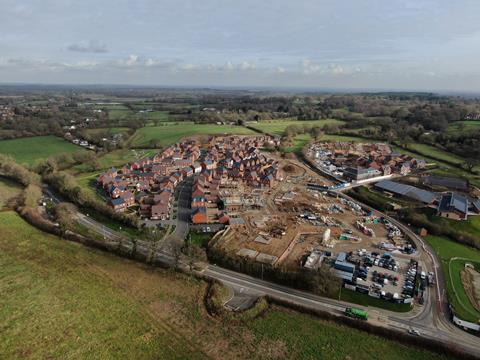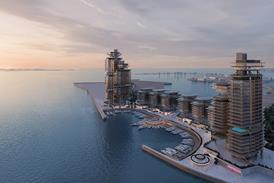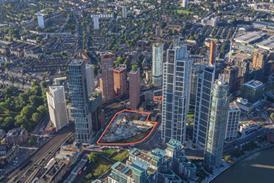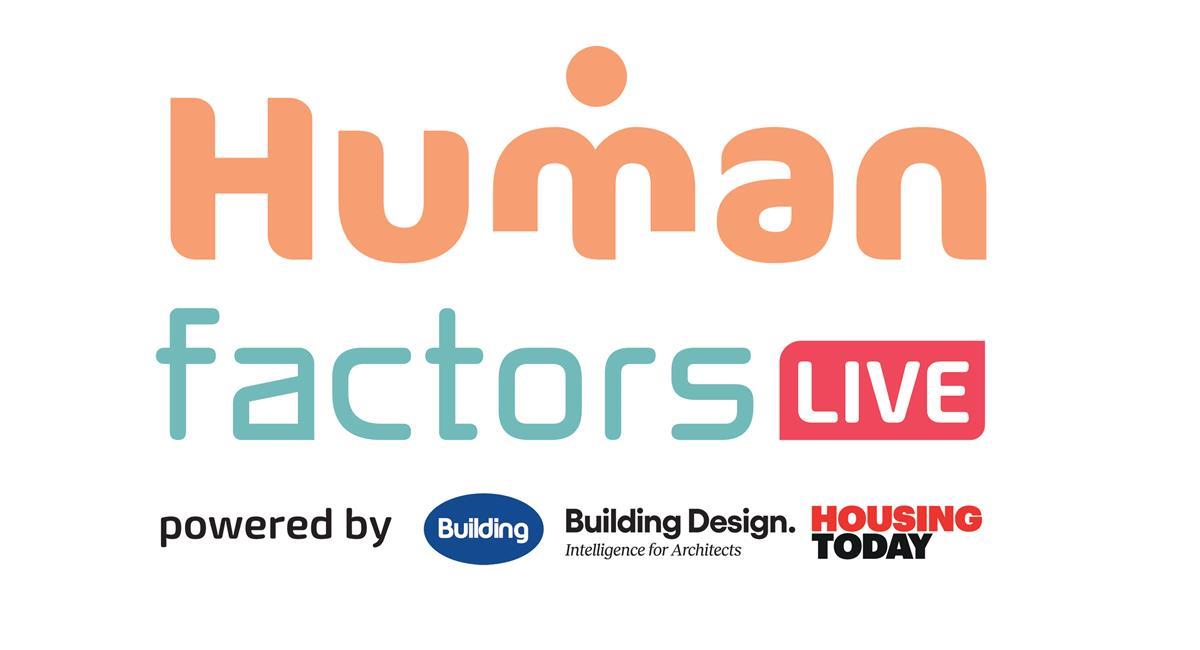The new government’s plans to allow more development on parts of the green belt have been hailed as a potential game-changer for housing supply. However, there are growing fears that the ‘golden rules’ governing the release of sites may simply make sites unviable

Land promoter Richborough is working with landowners to get permissions or allocations on around 60 green belt sites – that’s about a third of its pipeline of work. So, with the new Labour government setting out plans in August to make it far easier to release land from the green belt for development, you might expect chief executive Paul Campbell to be little short of jubilant.
Instead, he is worried. “I think the government is serious about tackling the housing crisis and that’s great,” he says, “but there will be consequences if they go through with what has been proposed”.
He is referring not to the overall thrust of the reforms which he, like most in the development sector, warmly welcomes. But, rather, to the specific policy detail regarding what planning contributions green belt sites will have to provide, and how they will be valued.
“This could all cause massive dislocation in the land market,” he says. “It’s a bit of a problem for housing supply.”
Campbell is raising the fears voiced repeatedly by developer and applicant groups in responses to the government’s consultation on its proposed change to the National Planning Policy Framework (NPPF), which closed late last month. The issue is that the requirement – on green belt sites only – for 50% affordable housing across the country, coupled with a stricter viability testing procedure, will effectively hinder schemes from coming forward.
The UK’s biggest pure-play housebuilder, Barratt, has already said that it has pulled work on three “in-flight” land promotion deals because of the altered viability, at the same time as predicting a wider “land strike” if Labour’s plans are delivered as proposed.

While some in local authority circles remain sceptical of what they regard as developer special pleading to be allowed super profits, there are growing fears from the other side of the fence that it could hamper Labour’s efforts to use land from the green belt to meet its highly ambitious 1.5 million homes target over the parliament. There are also concerns that it could make it easier for anti-development councils to block schemes, and will encourage sites in the wrong places to come forward.
So why are the proposals so controversial, and what will their impact be?
Rayner’s rules
Labour’s summer consultation on reforms to the NPPF did far more than just reverse Michael Gove’s damaging 2023 compromise with backbench Tory rebels – it proposed a series of significant changes, particularly around the green belt, which are designed to drive up housing numbers.
As well as introducing the new “grey belt” designation for green belt sites with low value, the consultation published by deputy leader Angela Rayner also proposed requiring councils to review green belt boundaries during local plans, alongside a new permission route for speculative applications.
Land data company LandTech estimates that up to 150,000 hectares of land could be classed as grey belt under the definition proposed by Labour, with enough space for between 2.5 million and 4 million homes.
“It’s always the case that people fall back on what they don’t like,” says Andrew Taylor, group planning director at partnerships housebuilder Vistry, “But we’ve got to be positive about all these changes and the clear desire here with the politicians, and in the manifesto, is to deliver on housing.”
Labour had announced prior to the election its intention to link a relaxation of green belt regulations to the requirement to obey a new set of “golden rules”, and politically the policy makes sense as a quid pro quo: developers get more sites; communities get more affordable homes.
The consultation itself confirmed what had been outlined in the manifesto – that green belt sites would be expected to deliver 50% affordable housing, among a range of other benefits. On sites where the scale of that obligation puts a scheme financially underwater, a viability testing route is proposed – albeit one done on the basis of a government-approved land value for the site (see below, What has the government proposed?).
No one’s going to shed a tear for the landowners, just because they’re only getting a National Lottery win rather than a Euro Millions jackpot
Mike Kiely, chair of the Planning Officers Society
For Mike Kiely, chair of the Planning Officers Society, all of this makes perfect sense, given that, in his view, owners of green belt land – which under existing planning policy should only be developed under “exceptional” or “very special” circumstances – should never have had any expectation of being able to sell their sites for development. “There shouldn’t be any existing hope value in that land. It’s perfectly legitimate for the planning system to try to capture that value to deliver affordable housing,” he says.
“No one’s going to shed a tear for the landowners, just because they’re only getting a National Lottery win rather than a Euro Millions jackpot.”
What has the government proposed?
According to the NPPF consultation, all sites brought forward in the green belt via the new relaxations in regulations – on grey belt sites, on previously developed land, and via speculative applications – should be subject to the government’s “golden rules”. These stipulate a range of additional contributions, of which by far the most onerous (cost-wise) is a requirement for all sites to provide 50% affordable housing.
The government accepted that this will not be able to apply in all cases – in the consultation it said that it will be “necessary to allow the limited use of viability assessments, where negotiation is genuinely needed for development to come forward, particularly in relation to affordable housing requirements”.
However, where these viability assessments happen, the proposal is that it is calculated on the basis of a price the developer has paid the landowner for the site – known as the benchmark land value (BLV) – that is determined by a nationally set formula. This formula, which the consultation suggests should be set as a multiple of the Existing Use Value (EUV) of the land, is to be designed to allow landowners “to sell their land at a fair price, while supporting the development of affordable housing, infrastructure and access to nature” the consultation says.
While the document refers to examples citing BLVs of anything between three and 40 times EUV, it says – in bold type – that the “government is particularly interested in the impact of setting BLV at the lower end of this spectrum”.
Unviable
Those in the development industry beg to differ. The first problem, they say, is simply that the requirement for 50% affordable housing will make most development sites unviable.
While 50% is the notional requirement in London – albeit not often hit – outside the capital, among local authorities that are required to viability test their local plans to ensure they are deliverable, there are actually very few with requirements that high. Even St Albans only manages 40%.
Richborough’s Campbell says it would be a mistake to think that more can necessarily be got out of green belt in these areas than other greenfield sites. “It is no more valuable by default,” he says.
An analysis by Lichfields claims that prima facie land values in 59% of the green belt are just too low to support 50% affordable housing – effectively meaning the policy will not work (with a couple of exceptions) on any sites north of Solihull. And that, even in that remaining 41% of the green belt, the consultant says on individual sites “there may still be other infrastructure obligations which render 50% affordable housing unviable”.
Given this, developers say this 50% target therefore has two immediate impacts. Firstly, that promotional work on ‘in-flight’ sites which are under contract between land owners and developers/promoters has to be reviewed and potentially halted as the contractual basis of the deal no longer exists. Secondly, that further sites may not come forward because land values are simply too low to tempt the landowners.

Redrow founder Steve Morgan, now also director of land firm Carden group, says: “The greatest risk to the viability of existing promotion agreements or options will arise if the government insists on 50% affordable housing on green or grey belt sites.
“There are many parts of the country where this would mean schemes are unviable, or minimum land values set out in existing promotion agreements or options will not be achieved.”
Barratt’s group land and planning director Philip Barnes has already publicly written that the firm has had to pull three “in-flight” applications “because the spectre of 50% renders the scheme unviable due to the unacceptably reduced (or removed) land value for the landowner”.
Sam Stafford, planning director at the Home Builders Federation, says: “The introduction of a new affordable target would fundamentally undermine the land contracts underpinning all planning applications either being processed or being prepared, with the likely result that those deals would have to go back to square one.”
Setting the benchmark
There is a work-around in the government’s proposals – viability appraisals – but it is far from giving the development industry cause for comfort. In fact, it is probably the issue they are most exercised about.
Developers and promoters, of course, are used to viability appraisals. What is concerning the sector is that the wording of the consultation suggests that viability appraisals on green belt sites will be calculated on the assumption of the developer paying a very low price for the land – a level which they say could stop sites coming forward.
Viability appraisals need the price paid for the land to be fed in to the calculation in order to work out whether a profit can be made and obligations afforded. Since a 2017 court case, developers have had to get used to the idea that, rather than the real purchase price, a notional value of what the land “should” be worth, factoring in local planning policies, is used as the basis of the calculation.
This benchmark land value (BLV) is used to stop a developer using the mere fact that it has vastly overpaid for a site from allowing it to argue that it cannot now afford to pay for affordable housing.
If the government insists on 50% affordable housing on green or grey belt sites, there are many parts of the country where this would mean schemes are unviable
Redrow founder Steve Morgan
Here the department is proposing a national BLV for green belt sites, set at the lower end of a range of three to 40 times the existing use value (EUV) of agricultural land. From the wording of the consultation, much of the industry, according to Paul Smith, managing director of promoter Strategic Land Group, is assuming the government is looking to end up at a benchmark value of EUV times 10.
It could, however, be lower. The Planning Officers Society’s Kiely, a supporter of the government’s approach, says: “It’s got to be lower than 10. It would be very difficult to land it there. I think five times is OK. What we’re talking about is [BLV setting] a bottom line in terms of value.”

Certainly, at face value, you can see Kiely’s logic. Those of us not in possession of 200 acres of well-positioned arable fields in the Chilterns, might be tempted to ask what could possibly be wrong with the government getting more affordable homes by limiting landowners’ windfalls to 10 times their current value. Surely 900% value uplift is a lottery win by any normal metric?
Not so, say those who work in the land promotion business. This, so they say, is because the profit from this land does not all go to the landowner. Instead it is used to defray a variety of costs.
Chief among these is the expense of promoting the site – via which a promoter has to not just make a profit but also make enough money to pay back the costs of all the failed sites which don’t receive planning – and which, according to Charlie Dugdale, partner and head of development partnerships at agent Knight Frank, can take out well over 10 times the existing use value in itself.
On top of that, landowners will also have to pay capital gains tax, and factor in the impact of losing the immunity farmers have from paying inheritance tax on passing farmland down to their children (See below, What’s included in land value costs?).
No investment
Farmers can often be reluctant sellers, given long family ownerships going back through generations. “They’re not looking 10 years forward,” says Shannon Fuller, planning adviser at Country Land and Business Association. “They’re looking 100 years behind and 100 years ahead at any given time.”
So, while building homes is the government’s priority, landowners have no particular reason to support housing, against any of the other uses their land could be put to, such as energy generation, or biodiversity or carbon offsetting. “Anybody who has sat at a farmer’s kitchen table and tried to persuade them to enter into an option or promotion agreement will know that the vast majority are not motivated sellers,” says the HBF’s Stafford, formerly a strategic land director at Barratt.
The question is, ‘will the policy decrease land coming forward enough to make a difference to supply?’
Paul Smith, managing director of promoter Strategic Land Group
Given the costs and lack of motivation, Knight Frank’s Dugdale estimates that a 20 times EUV is the practical minimum that will generally persuade a landowner to part with a site. Dugdale says: “Below this level we would expect that promotion activity would slow significantly as it has over recent years.
“In simple terms, if the returns do not justify the cost and risk, then actors will not make the investment.”
Dugdale is not an outlier. The CLA’s Fuller says: “Landowners want to be able to develop their sites, where they’re in the right location, but we’re concerned that if benchmark land values are brought in and not set appropriately then promoters just won’t invest and we’ll see a downturn in land coming through.”
Richborough’s Paul Campbell agrees. “You can’t expect that people will sell when the values they’ll actually realise are that close to agricultural value,” he says. “The sheer cost of promoting sites is enormous, and to go through all that emotional upheaval – it’s just unrealistic.”
What’s included in land value costs?
Charlie Dugdale, partner head of development partnerships at Knight Frank, says agricultural land usually requires a minimum valuation of around 20 times the existing use value for it to be brought forward for development – double what the government is understood to be contemplating. Agricultural land is typically worth up to £10,000 an acre, but the price paid by the developer for it has to be enough to reward the landowner, pay for the cost of promotion and pay any other taxes or costs likely to be incurred. An EUV times 20 valuation would therefore pay £200,000 per acre for the site.
Dugdale says the cost of promoting a site, incurred usually by a land promotion firm working at risk, is “rarely less” than £25,000 per acre. Given how many sites never achieve planning, promoters expect a five-fold return on their investment – which would make their take per acre around £125,000, reducing the £200,000 receipt to £75,000.
The “profit” for the landowner would be subject to capital gains tax at 24% - reducing the receipt to just under £60,000. However, many landowners will also want to factor inheritance tax (IT) into any sale. While agricultural land can be passed down through the family without incurring inheritance tax at 40p in the pound, cash or any other assets bought with the proceeds of selling that land will be subject to it.
Paul Smith, managing director at promoter SLG, says: “It’s amazing how many landowners are older, and for them inheritance tax is a key point. No one wants to sell the family silver at a discount.”
Applying 40% IT to this theoretical acre would bring the ultimate value down to £36,000. So, despite a top-line valuation 20 times the existing farming value, a landowner might – the logic of Dugdale’s numbers suggests – ultimately pocket just three and a half times EUV.
As well as green belt sites simply not coming forward at the rate expected, some worry there may be specific perverse consequences of the policy outlined. One is that local authorities keen to stop development on green belt sites for political reasons use affordable housing requirements to block schemes, quoting the government’s own words back at it.
Another consequence could be that both smaller sites and sustainable green belt sites adjacent to existing cities become particularly hard to bring forward. Instead, bigger sites, benefiting from economies of scale in the land promotion and from lower historic “hope value”, are brought forward even though they are in less sustainable locations.
A senior executive at a major listed housebuilder, says: “Our concern is recalcitrant planning authorities think it’s a clever wheeze to stop sites being built out. And, also, that it will push the industry toward more isolated, mega developments.”
>> See also: Will Labour’s ‘grey belt’ plans boost housebuilding or turn out to be an ill-defined gimmick?
While the government’s “golden rules” policies may work on the level of politics, it is not at all clear they pass the practicality test. Much of the industry, accepting the principle of a quid pro quo for opening up green belt sites, has coalesced around the idea that instead newly released land offers a 10 percentage point affordable housing premium – rather than a flat 50% rate.
This case was made in the consultation responses of a number of major trade bodies – and the senior housebuilder executive says it has also been raised by industry leaders with the housing minister, Matthew Pennycook, personally.
Without a change of tack, there is a concern that much of the opportunity presented by the NPPF consultation will be lost. SLG’s Paul Smith says: “The question is not, ‘will it decrease land coming forward?’ The question is only, ‘will it decrease it enough to make a difference to supply’?”
















No comments yet